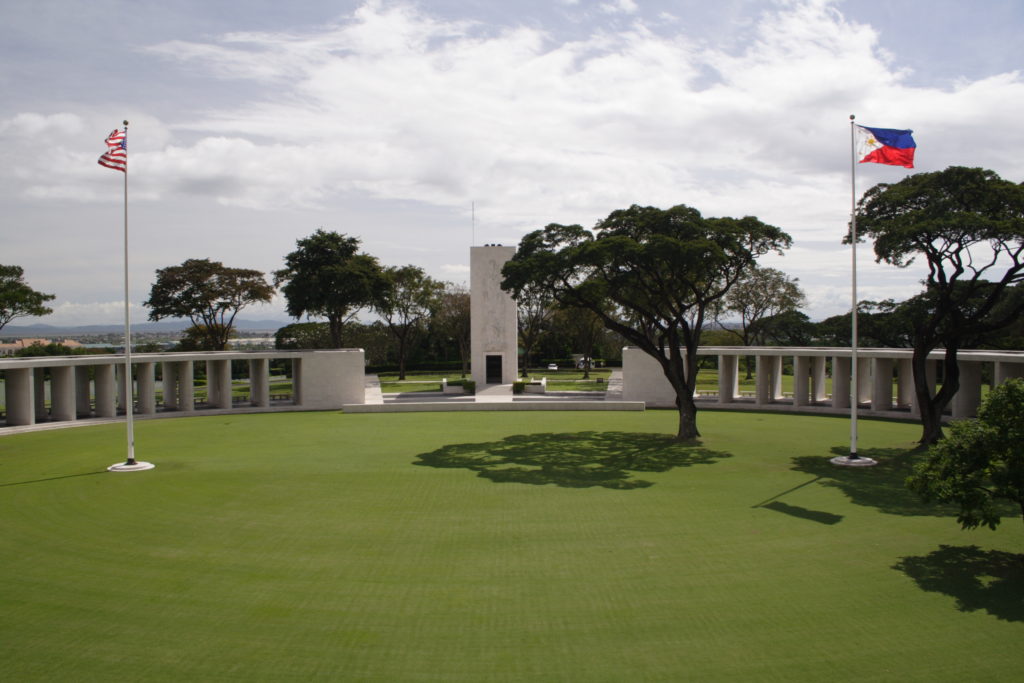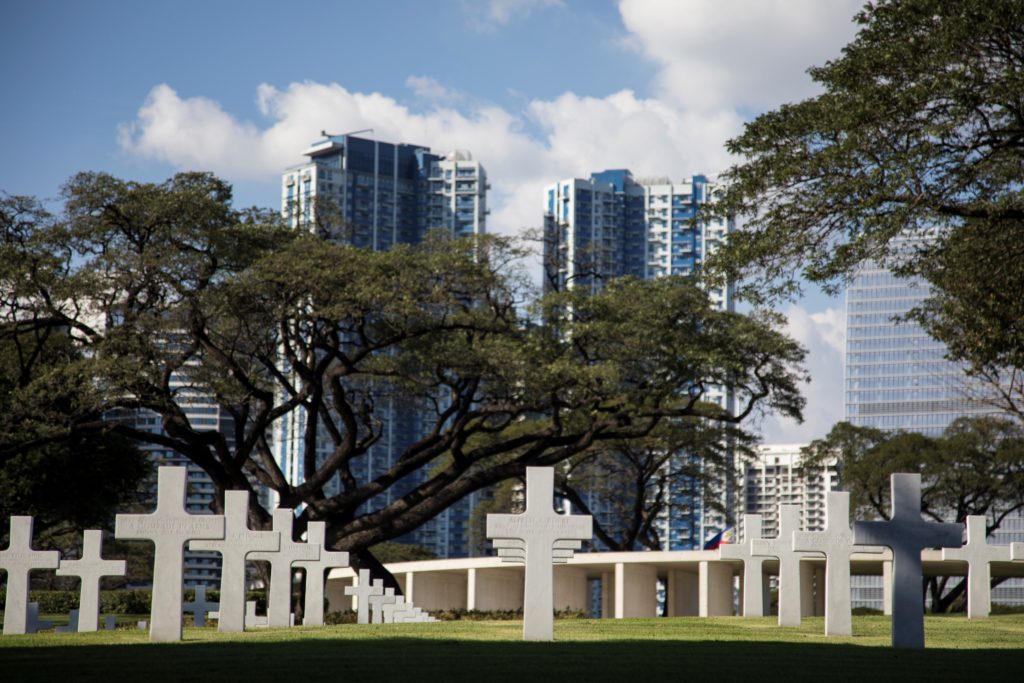
A tribute to resistance, sacrifice and brothers in arms, Manila American Cemetery and Memorial takes us Back to Bataan.
Written by Jenn Thornton
In 1945, John Wayne starred in the World War II film Back to Bataan, portraying U.S. Army Col. Joseph Madden leading a guerilla campaign against Japanese troops in the Philippines, with Anthony Quinn’s Capt. Andrés Bonifácio commanding the Filipino resistance. The film captured a harrowing chapter in wartime history that, though too little talked of today, was fresh in the nation’s mind when it was released.
Manila certainly remembers. In the Philippines bustling capital city, the Manila American Cemetery and Memorial is sacred ground. In its number of graves and names recorded on memorial walls, the largest cemetery site administered by the American Battle Monuments Commission (ABMC) is a show of American-Filipino military solidarity that continues to this day—the Philippines government granted its free use as a permanent burial ground in perpetuity without charge or taxation, according to ABMC.
The site is surprisingly peaceful considering its location in densely packed Manila, but the brutal conflict that led to its building was not. Simultaneous attacks on Pearl Harbor, the Philippines and other strategic targets led to war in the Pacific. While Japanese forces conquered other parts of Asia, they met committed resistance in the Philippines. “Fierce defenses by U.S. Army Forces Far East (U.S. Army, Philippine Army and Philippine Scouts) held off Japanese assaults for six months, delayed the Japanese timetable, and enabled the start of the U.S. offensive operations in the Pacific,” ABMC states in its timeline of events, which included the eventual April 9, 1942 surrender of U.S. Forces on Bataan, due to woefully insufficient supplies, and the Bataan Death March that began the next day—the brutal 65-mile walk that forced 76,000 Filipino and American POWs to the Japanese prison camp at Cabanatuan.
Dedicated in Dec. 8, 1960, the Manila American Cemetery and Memorial is a stunning tribute to those who fought, resisted, and fell in operations in New Guinea and the Philippines—Americans and Filipinos alike. Along with the 17,097 headstones, 16,931 Latin Crosses, and 166 Stars of David spread across the 152-acre site is a Wall of the Missing featuring 36,286 names, among them 29 Medal of Honor recipients. One also discovers the names of 20 sets of brothers.
Back to Bataan, though a Hollywood depiction of the fight for Filipino freedom, did have Col. George S. Clarke, commander of the U.S. Infantry Philippine Scouts, as a technical advisor on the film, according to the America Film Institute. The original ending of the film, meanwhile, had the American officer Madden as the hero, but Duke, apparently, disagreed. So did producer Robert Fellows. Citing news items in both the LA Daily News and HR, AFI states: “…the film was nearing completion in 1944 when the Americans landed on the island of Leyte to launch their invasion of the Philippines and defeat the Japanese. At that time, RKO decided to change the film’s ending to coincide with current events.” A new ending was written, with Capt. Bonifacio leading his forces to victory, and the war for freedom was won.

Photos courtesy of American Battle Monuments Commission


